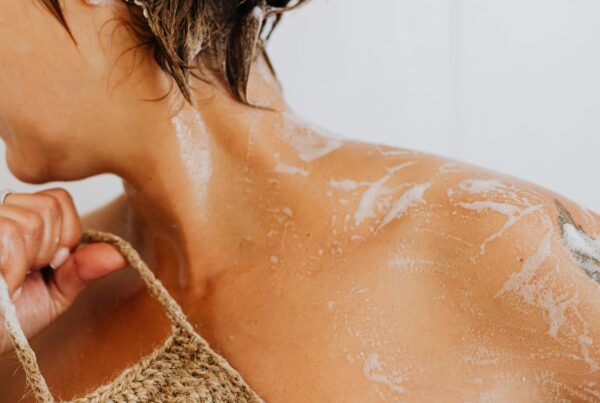Cuddling isn’t just cozy — there are actual benefits! Researchers have confirmed that cuddling:
- Helps to gently initiate sex between partners
- Enables connection and emotional aftercare following intimacy
- Releases “happy hormones” (oxytocin and dopamine) and creates feelings of joy and reduction of stress
- Cuddlers report greater levels of relationship intimacy
There are many different cuddling positions, and which one you prefer can reveal a lot about your relationship! Here are 10 cuddling positions and what they mean:

Photo by Becca Tapert on Unsplash
1. Face To Face
- You and your partner face each other
- Some body parts are touching
- Pillow may be shared
This cuddling position is incredibly intimate and reflects a deep, emotional connection. The proximity of your faces shows a willingness to be vulnerable and that there’s a solid sense of security.
2. Spoon
- You and your partner face in the same direction
- One of you is the “little spoon” (the passive snuggler) and one is the “big spoon” (the active snuggler)
- Pillow may be shared or heads may reach away from one another
If this is your favorite cuddling position, you likely feel a lot of satisfaction and safety in your relationship. The little spoon feels secure, and the big spoon feels protective.
3. Honeymoon Hug
- You and your partners lie face to face
- Your bodies are fully entwined
- The more contact the better!
It’s called the honeymoon hug for a reason! If this is your go-to cuddling position, you’re likely to head over heels for each other. You want to be as physically close as possible, and it’s common at the beginning of a relationship.
4. Half Spoon
- A more open alternative to the classic spoon cuddle
- Your partner lies on their back with an outstretched arm
- You curl in a spoon position towards them

Photo by We-Vibe Toys on Unsplash
- They wrap their outstretched arm around you and draw you in close
- You can rest your head on their chest or use your own pillow
This full-spoon alternative allows for more air, helping you avoid getting too hot. If this is your favorite cuddling position, there’s likely a sense of stability in your relationship. If you are the one lying on your back, you feel a sense of protection for your partner, but respect for their ability to care for themselves.
5. Cheek To Cheek
- You and your partner face away from one another
- You touch your backsides (and maybe lower backs) together
- Often partners legs are bent, but feet may also touch or entangle
The cheek to cheek is like the face to face in reverse. This cuddling position reflects a desire to touch and stay close, but also shows respect for one another’s body autonomy.
6. Leg Hug
- Each partner finds their most comfortable position independent of the other
- Then you touch or hook your legs together
- Perfect for partners who want to be close but have different sleeping styles
This cuddle position reflects a desire to touch, but also respect for sleep. If you don’t have the same sleeping style as your partner, this is a great cuddling position for staying close while staying comfortable.
7. Holding Hands
- You and your partner get comfortable in whatever position is best for you
- Once cozy, reach out and hold each other’s hands
Holding hands signifies support and partnership. It is an action that is both intimate and innocent. If this position feels right for you and your partner, you likely feel a lot of security and trust in your relationship.

Photo by JESSICA TICOZZELLI from Pexels
8. Lap Pillow
- Your partner is seated or reclined
- You rest your head in their lap (or you swap roles)
While this cuddling position isn’t usually for sleeping, it’s perfect for binge-watching a favorite show, reading together, or listening to music. This reflects a very close and loving relationship.
9. Chest Rest
- One partner lies on their back
- Other partner rests their head on the first partner’s chest
- Partner on the bottom can cradle the one on the top in their arms
If you are the partner resting your head, this cuddle position offers you feelings of comfort. If you’re on the bottom, the weight of your partner on your chest is grounding and soothing, like a weighted blanket.
10. Ying/Yang
- You and your partner face each other, but there’s a twist
- Your heads are at opposite ends of the bed
- You rest your heads on one another’s knees
If this is your preferred cuddling position, you and your partner value balance, fairness, and equality. (You’re also a little spicy!)
Who knew your cuddling position could say so much about your relationship! So, what does your favorite say about yours?






![women [longevity live]](https://longevitylive.com/wp-content/uploads/2020/01/photo-of-women-walking-down-the-street-1116984-100x100.jpg)









